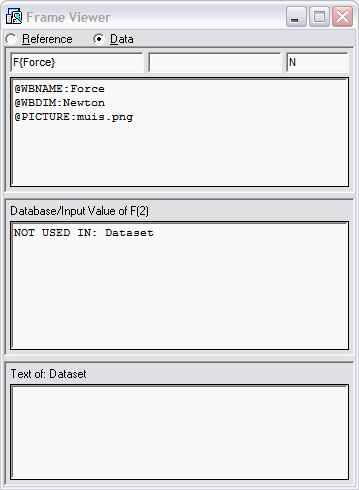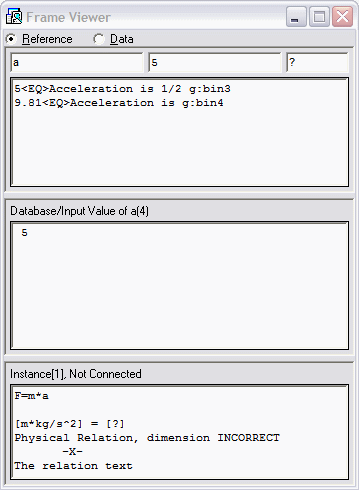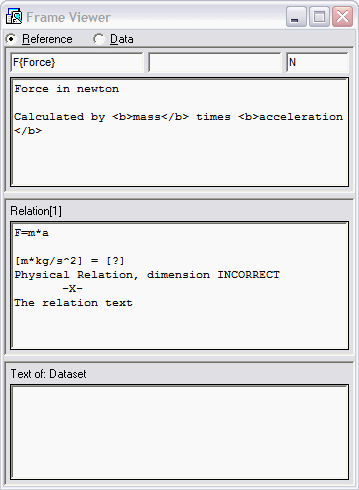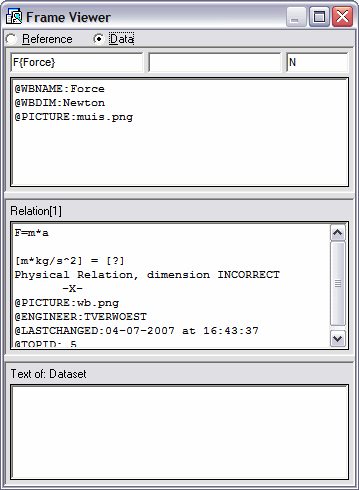Page History
...
An illustration connect to a parameter is presented as such in the Explanation window.
There is a difference between an illustration connected to a parameter by means of the dialogue in the Slots & Properties window and by means of a connection to a binary (see hereafter and document Image Management ). An illustration connected through Slots & Properties, is connected to an existing file on your disk. This reference is lost when you move the knowledge base to another place on your disk. Therefore this approach is only useful when the reference is made to files that will always be distributed with the knowledge base.
...
When you use the document connection in Slots & Properties, Quaestor will Quaestor will use an absolute path. However, since Quaestor 2since Quaestor 2.46.2 you are able to link to a "relative" HTML path to enable storage of "Getting started" documentation with the knowledge base.
...
The linking is done by using the @DOCUMENT attribute and the following syntax in the data slot of the parameter that you want to refer to this documentation (usually thethe QKnowledgebaseVersion parameter):
@DOCUMENT:./<starting file.html>
...
- The menu item Help>Show documentation of... is connected to this parameter;
- QKnowledgebaseVersion by default has the @SHOWASFIRST attribute;
1.1.6 Optional parameter binary connection
...
- By including it in the frame of the parameter and place a reference to the file name in the data slot of the parameter;
- By creating a reference to the QBinaryID in the QBinaries object in the dataset;
In both cases the reference is defined by means of the @PICTURE attribute although all types of binaries can be connected. The reason it is still called picture is due to backward compatibility.
...
For the reference to the binary in the frame first select the parameter in the knowledge base and choose "Include binary in frame...". Hereafter place @PICTURE in the data slot of the parameter with the filename after it.
For example, for parameter F the picture "muis.png" is included as binary in the frame. By adding @PICTURE:muis.png it will be presented in the Explanation window.
1.1.6.b Reference to QBinaryID
Instead of including a binary to a single frame, you can also make a database with binaries in the Dataset of the knowledge base and refer to this data (for further information see alsoalso Image Management ).
The only difference with section 1.1.6a is that you use an additional ":" after the @PICTURE attribute and refer to the QBinaryID.
For example @PICTURE::bin1 will show the "muis.png" picture because it is available in the QBinaries data object of the dataset.
...
When you have used the <EQ> statement in the reference slot of the parameter to create a select list of explicit values for a parameter (see also a Tips and Tricks forum item), you are able to connect values of the parameter to a particular picture. You simply add ":bin3" or any other QBinaryID to one of your <EQ> values and when this value is selected, it will be presented as picture with the selected parameter value in the Workbase.
1.2 Documentation and reference for relations
...
In addition, you can give a reference description and connect a binary. This basically works the same as for parameters, but information is provided in the second part of the Frame Viewer.
The reference text of the relation is written in the second part of the Frame viewer (see the text "The relation text" in the left side window). The binary can be included into the frame again and the link is provided by the @PICTURE attribute (see @PICTURE:wb.png in the right side window).
...
Beside a description of all your parameters, relations constraints etc. you are able to group relevant parameters and relations in classes in the class tree. You can create a new class and arrange existing classes in the class tree on the left side of the Knowledge Browser and drag and drop parameters and relations in these classes.
The purpose of classes is to organise your parameters. You do this by selecting any existing class and press the right mouse button.
...
To reorder the classes you have to press the button between the forward and back buttons of the knowledge browser (field 2). This button will switch the class tree view between Class List, Domains and Class Tree view (the default view). Please note that button has the name of the view you will switch to (and not the present view). In the Class List mode you will see all classes presented in a syntax showing sub-classes after a dot. So, a sub-class of "Top Goals/Undefined" class is presented as "Top Goals/Undefined.sub-class". You can simply drag and drop the presented class entries in order to manipulate the order of classes and sub-classes. The only class you cannot move is "Top Goals/Undefined".
Please look at the KE Tutorials for more details.
3 Presentation of information
Presentation of the information is divided into two parts:
- Presentation in the Quaestor clientthe Quaestor client;
- Presentation on the web-based version;
3.1 Presentation in Quaestor
In Quaestor information In Quaestor information is of course presented all over the interface. We will concentrate on the relevant presentation for the user.
For the user there are two places where information is presented:
- The Workbase;
- The Explanation window;
In the Workbase the interaction with the user is happening. In this part the user is asked to provide input and make choices. The choices are based on the input for parameters and presented as list or table in the Workbase, optionally with indication of the relevant object in the tree view. The list in the Workbase presents either the parameter name, its presentation name or the first line of the reference text, depending on the user rights and choice for presentation option made in the Workbase.
At the same time, all type of information is presented in the Explanation window at the left side of the Workbase (see Quaestor interface for more details).
The Explanation window presents all information on the selected parameter, relation, constraint or function, depending on user rights and settings of Quaestor (just play around to see what happens).
...
Remark:
Whether you see the complete or compact presentation of relations will depend on your user rights and the choice for compressed or complete presentation of relations in the Appearance tab of the Options window.
By default the GUI is configurated in the new style. To return to the old interface you have to change the following two settings in the Options window under the Tools menu:
Replacing the new "explanation" window with the classic "illustration with frame viewer" setup:
- Go to Tools>Options>Appearance and select "Use classic frame viewer"
- Go to Windows>Standard to get the standard windows settings
Replacing the new "continue or return to input dialogue" window with the classic "inference dialogue" :
- Go to Tools>Options>Modeller and select "Show classic inference dialogue"
...
The web-based version of Quaestor presents a sub-set of the explanation window. The only thing is presents is the full reference text and the binaries (pictures) or links to binaries.
...



